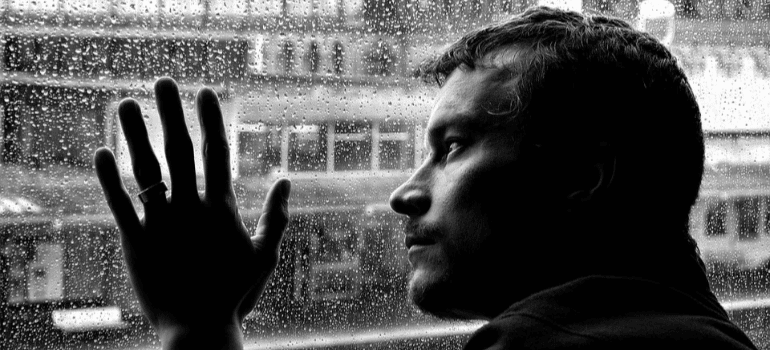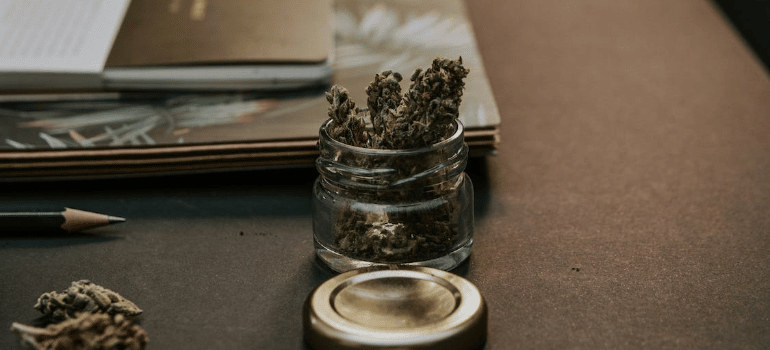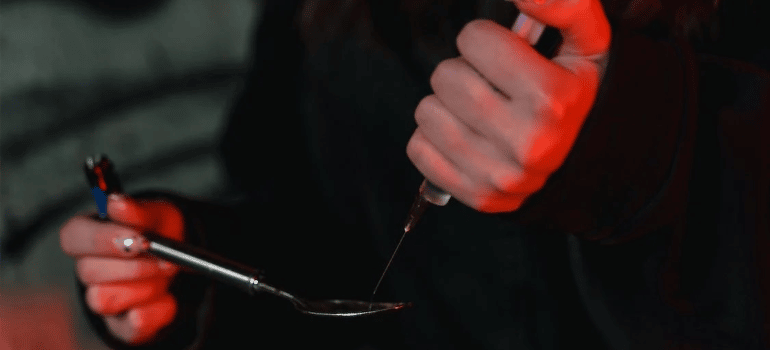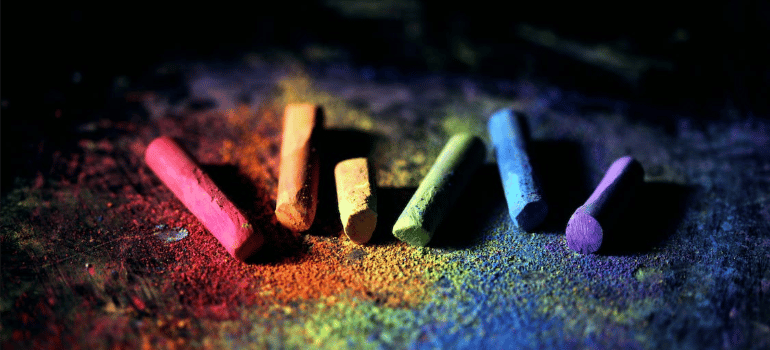If you’re in any way invested in the field of addiction and addiction treatment, you’ve likely seen this correlation. Identifying as LGBTQ and experiencing a Substance Use Disorder (SUD) seem closely connected, as statistics show. In a time when SUD trends among general populations in the US already show a worrying trajectory, this correlation simply cannot be ignored. Thankfully, addiction treatment in Parkersburg for the LGBTQ community is not falling behind; addiction treatment providers have taken note.
As is the case with addiction in general, this overlap presents some simple patterns and some profound complexity. In both cases, this vulnerable demographic requires both unyielding attention and personalized care to successfully complete rehabilitation. As pioneers among rehab centers in West Virginia, we at Harmony Ridge Recovery we strive to profess and offer both. Therefore, today we’ll take a closer look into this subject and hopefully illuminate it properly.
LGBTQ substance use disorder statistics
First things first, we should substantiate and quantify this initial claim. At a glance, it may not appear like a truly noteworthy phenomenon – but it absolutely is, as data shows.
For the following introductory exploration, we will be citing data from the Butler Center for Research. Indeed, their 2016 “Substance Abuse Factors Among Lesbian, Gay, Bisexual, Transgender, and Questioning (LGBTQ) Individuals” findings are truly illuminating.

LGBTQ substance abuse and dependence
Initially, decades of research have corroborated that this demographic does face more addiction-related struggles. Identified as “LGB” in the late 70s, studies at the time had already begun to uncover higher SUD rates “among sexual minorities as compared to their heterosexual counterparts”. This did, over time, start to influence addiction treatment in Parkersburg for the LGBTQ community, but at the time it only served as a rudimentary starting point toward exploring a deeper matrix of issues.
Examples of these findings include:
- “Gay and bisexual men [have] a much higher propensity to abuse methamphetamine than heterosexual men”.
- “The elevated use of methamphetamine has been linked to increased risk of HIV transmission[.]”
- “On average, gay men who have been diagnosed with a substance use disorder report significantly later ages of first use for all substances as compared to heterosexual men, particularly for first use of cocaine and methamphetamine”.
As the field grew, and the community evolved into LGBTQ, transgendered individuals also came into the spotlight. Among them, too, findings showed a consistently worrying trend. Examples include:
- “Transgendered individuals [have] been identified as displaying higher-risk substance use behaviors as compared to “cisgender individuals” (those whose identified gender is congruent with their birth-assigned gender)”.
- “Transgender women (those who endorse a male-to-female transgender status) [report] significantly higher-than-average rates of methamphetamine abuse”.
- “Transgender women [were] significantly more likely to have used needles in the previous year to inject a drug than cisgender women were”.
Needless to say, these findings are statistically relevant and worth adjusting to. That, for example, “transgender women in San Francisco were more than 6 times as likely to seek treatment for methamphetamine use as compared to cisgender women” can simply not be overlooked.

Characteristics of LGBTQ individuals with SUDs
In addition to the above, ample current findings emerge to inform addiction treatment in Parkersburg for the LGBTQ community. Namely, ones that highlight the prevalence of trauma, anxiety, and similar concurrent challenges.
At a basic level, many of us have an understanding that this demographic may struggle more with mental health disorders. Ostracization and social isolation, low self-esteem, intimate partner violence (IPV), and other factors can help explain this phenomenon. However, statistics help quantify it as a very deep issue that warrants attention.
For one, studies find that LGBTQ individuals suffer significantly higher incidences of:
- stressful childhood experiences
- school victimization
- neighborhood-level hate crimes
- family conflict
These factors, as dual diagnosis principles hold, significantly increase the chance for, and severity of, SUDs. To highlight this properly, we may cite such relevant findings as:
- “Transgender men and women are more than twice as likely to have a diagnosis of a mental illness as cisgender men or women”.
- “LGBTQ patients were significantly more likely to be diagnosed with depressive and anxiety disorders”.
- “LGBTQ individuals are 2–3 times more likely than heterosexual individuals to report suicidal ideation or attempts”.
With such severe challenges, driven by factors both external and internal, it should be easy to see just why the LGBTQ community faces such struggles with SUDs. Mental health disorders significantly overlap with SUDs, after all, as we’ll cover next.

Treatment challenges and outcomes for LGBTQ individuals
Finally, there are unfortunate challenges the community faces – thankfully, alongside promising outcomes. Addiction treatment in Parkersburg for the LGBTQ community has evolved in strides to best cater to this demographic’s unique needs, for one. However, the community also perseveres and achieves rehabilitation even in the absence of such specialization; a testament to its fortitude.
Topical challenges aside, such as individual treatment providers’ active hostility or simple lack of knowledge, finding specialized treatment seems hard:
“A 2007 study of substance abuse programs throughout the United States and Puerto Rico found that, of the 854 programs that reported via national survey to have specialized treatment services for LGBT individuals, only 62 programs (7.3%) confirmed during telephone follow-ups that such services actually existed”.
Whether this largely falls under dishonesty or lack of confidence is anyone’s guess. However, even as addiction treatment only now begins to cater to them, LGBTQ individuals don’t seem to fall behind. Studies find that “there are no significant differences in outcomes for LGBTQ patients who utilize substance abuse treatment programs as compared to heterosexual patients”, which should offer hope for a brighter future – regardless of treatment providers’ specializations. That LGBTQ patients seek treatment at much higher rates certainly helps this outcome as well.

The five most prevalent SUDs within the LGBTQ community
The above aside, specific demographics within the LGBTQ community tend to gravitate toward specific substances. This is not a statistically insignificant trend, as we’ll see, so it does warrant attention.
Theory and encyclopedic knowledge aside, we hope this information is useful in another regard as well. If you or your loved ones seek addiction treatment in Parkersburg for the LGBTQ community, you should likely take note of treatment providers who specialize in such substances. Even if they don’t truly cater to LGBTQ-specific needs, a deeper understanding of the specific type of addiction can make all the difference.
#1 Tobacco
Among the most commonly used addictive substances is tobacco. Tobacco sees widespread use among US adults, with regional extremes in some states. It also comes with notably high use rates among specific industries, as NCBI reports.
Within the LGBTQ community too, it is unfortunately quite common. AddictionCenter finds that “gay and transgender individuals use tobacco up to 200% more than those who identify as heterosexual”.
#2 Marijuana
Marijuana also sees quite widespread use. There are a few different reasons for this, including its legal status in some states and broader social acceptance. The myth that marijuana is largely harmless persists as well, as virtually every marijuana rehab center in the country observes.
Whether as an escalation from tobacco use or as a standalone SUD, marijuana too remains very prevalent among LGBTQ individuals. This is most visible in gay men, who are 3.5 times more likely to use marijuana than heterosexual men.

#3 Alcohol
Another very frequently used substance comes in alcohol. This specific addiction is classified as Alcohol Use Disorder (AUD), but comes with all typical SUD effects on one’s health. Today, it is among the most common addictions in the US, as alcohol rehab centers in WV and beyond report. Addiction treatment in Parkersburg for the LGBTQ community observes similar trends as well.
To quantify both, Caron finds that “more than 6 percent of adults in the U.S. have an alcohol use disorder”. Gender-wise it affects “about 1 in 12 men and 1 in 25 women”. The LGBTQ community shows a similar general trend, as 20-25% of LGBTQ individuals have an AUD. Some studies show an inverse gender trend, however, noting that lesbian women tend to consume more alcohol than other groups.
#4 Amphetamines
If the above seemed a drastic increase, amphetamines will, unfortunately, overshadow it. Amphetamines are a class of stimulant drugs, often prescribed, which also resemble methamphetamine in chemical structure. As such, amphetamine users may develop such addictions as:
- Stimulants addiction
- Fentanyl addiction
- Ambien addiction
- Barbiturates addiction
- Benzodiazepine addiction
- Meth addiction
Because of their potency and potential for abuse, amphetamines do fuel addictions at notable rates. The overprescription of drugs alone has caused the HSS to declare a nationwide opioid epidemic, which is still ongoing. In this context, it’s particularly troubling that “members of the LGBTQ community are 12.2 times more likely to use Amphetamines”.
#5 Heroin
The final notable substance comes in heroin. Heroin is a powerful illicit drug, with highly addictive properties and immense potential for misuse. While it’s not as widespread as it used to, heroin rehab centers across the country remain vigilant. Heroin is among the most common drugs to overdose on, and a heroin overdose is more likely to be fatal.
In this context, then, it is very concerning that “LGBTQ individuals are 9.5 times more likely to use heroin than heterosexual individuals”. That they seek therapy more often, and sometimes earlier, certainly helps – but the danger remains.

Addiction treatment in Parkersburg for the LGBTQ Community; what to look for
Having touched on seeking therapy, then, the LGBTQ community may not at all times find uniquely personalized services. As highlighted above, literature on this field continues to expand, and much research thus far remains inconclusive. Addiction treatment providers may also not focus on this demographic’s needs for a wealth of reasons, from low demand to a perceived lack of need and more.
Still, there are specific indications that a treatment provider is ready to meet an LGBTQ individual’s rehab needs. In no particular order, and with the above context in mind, consider the ones that follow.
A firm grasp of the leading causes of addiction
First, their programs, content, testimonials, and communications should demonstrate a firm grasp of the fundamentals of addiction. To briefly outline them, the three primary ones are:
- Genetics and epigenetics. Ample literature, including NIDA’s “Genetics and Epigenetics of Addiction” study, confirms that genetics play a crucial part in SUDs. Substance use itself also affects the brain in ways that fuel addiction.
- Environmental factors. A subset that impacts LGBTQ individuals more than the general public, this includes access to substances, barriers to SUD treatment, and social stigma. NCBI identifies more complex socioeconomic factors in this category as well.
- Peer pressure. A final deciding factor in most SUDs comes in peer pressure, which NCBI finds is typically evident on college campuses. For LGBTQ individuals, isolation from one’s peers can also be present as an element of this category.
This kind of knowledge alone may not at all times ensure seamless addiction treatment in Parkersburg for the LGBTQ community. It will, however, help indicate that your candidates are ready to tackle these factors individually and with due care throughout rehab programs.

A keen focus on dual diagnosis
Second, and undeniably crucial in this context, is the principle of dual diagnosis. This finds that, even among the general public, SUDs very often overlap with such mental health disorders as:
- Anxiety
- Bipolar disorder
- Depression
- Eating disorders
- Personality disorders and borderline personality disorders
- Schizophrenia
- Trauma
- Autism
- OCD
- ADHD
- PTSD
This factor can absolutely not be overlooked. For one, it’s extremely common; NIDA finds that 37.9% of adults with SUDs also have mental illnesses, and 18.2% of adults with mental illness also have an SUD. In addition, as we covered above, LGBTQ individuals struggle with mental health disorders at much higher rates. As such, it is crucial that your treatment providers focus on dual diagnosis and are equipped to provide appropriate services. This may include pharmacotherapy, psychotherapy and psychiatric care, continued counseling, and more.
Progress-based, phase-appropriate therapy
A second indication should come in your candidates’ array of available therapies and therapeutic approaches. Initially, consider how they distinguish between individual and group settings, and how they employ such practices as:
- Individual therapy
- Group therapy
- Family therapy
- Holistic addiction therapy
- Art therapy
- Motivational interviewing
Ideally, they should be able to follow the individual’s progress throughout rehab – starting with pharmacotherapy, clinical services, and individual therapy, before expanding to group settings as needed.

Beyond such practices, addiction treatment in Parkersburg for the LGBTQ community should strongly hinge on behavioral therapy. Ample studies, including the ones cited above, find that behavioral therapy is demonstrably and equally effective for LGBTQ individuals. Therapies of this type should include at least one of the following:
- Cognitive Behavioral Therapy (CBT)
- Dialectic Behavior Therapy (DBT)
- Rational Emotive Behavior Therapy (REBT)
- Eye-Movement Desensitization and Reprocessing (EMDR)
Of course, the more such options they offer the more flexible and personalized their services will likely be.
Personalized rehab programs
Finally, on that subject, personalization is of paramount importance in effective rehabilitation. We have always stood by this and continue to do so; there is no one-size-fits-all in addiction treatment. NIDA validates this view, explaining that:
“To be effective, treatment must address the individual’s drug abuse and any associated medical, psychological, social, vocational, and legal problems. It is also important that treatment be appropriate to the individual’s age, gender, ethnicity, and culture.”
Ideally, in this context, your candidates should offer LGBTQ-specific services. If they don’t, however, you may examine their personalized programs. They may provide gender-specific care and accommodations, for instance, which tends to be a good indication.
In addition, consider if they offer rehab for specific demographics or occupations, such as:
- Rehab for professionals
- Rehab for pregnant women
- Intensive rehab for young adults
- Rehab for seniors
- Rehab for veterans
Such outlooks on rehab should also help confirm their grasp of the different needs of different individuals. Typically, such treatment providers will accommodate more LGBTQ-adjacent needs on request, as they have such frameworks in place.

You’re not alone; seek help today
In summary, addiction treatment in Parkersburg for the LGBTQ community is thankfully becoming more available. Not all addiction treatment providers offer such services yet, but many of our peers have started to progress in that direction. From focusing on dual diagnosis, which LGBTQ individuals face more often, to deeper service personalization, specialists shape a better future.
At Harmony Ridge, we’re keenly aware of the challenges the LGBTQ community faces as regards substance use. We follow all emerging literature on this highly complex topic, and integrate the latest scientific developments into our programs. From flexibility to personalization, you can rest assured our services will cater to all your unique needs as an individual.
If you would like to know more about us or want to seek help for yourself or a loved one, please feel free to contact us today. Our teams are available 24/7, and will always be happy to help you in any way you need.



